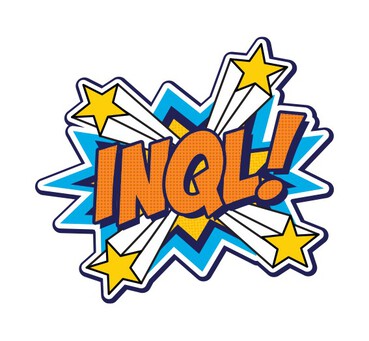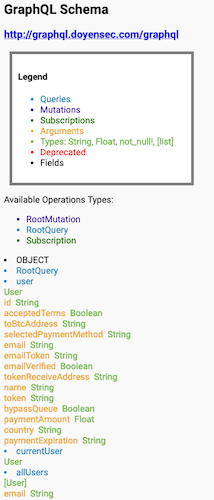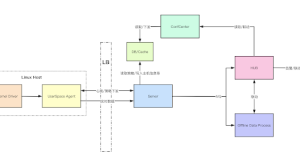[sc name=”ad_1″]
A security testing tool to facilitate GraphQL technology security auditing efforts.
InQL can be used as a stand-alone script or as a Burp Suite extension.
InQL Stand-Alone CLI
Running inql from Python will issue an Introspection query to the target GraphQL endpoint in order fetch metadata information for:
- Queries, mutations, subscriptions
- Its fields and arguments
- Objects and custom object types
InQL can inspect the introspection query results and generate clean documentation in different formats such as HTML and JSON schema. InQL is also able to generate templates (with optional placeholders) for all known basic data types.
For all supported options, check the command line help:
usage: inql [-h] [--nogui] [-t TARGET] [-f SCHEMA_JSON_FILE] [-k KEY]
[-p PROXY] [--header HEADERS HEADERS] [-d] [--generate-html]
[--generate-schema] [--generate-queries] [--insecure]
[-o OUTPUT_DIRECTORY]
InQL Scanner
optional arguments:
-h, --help show this help message and exit
--nogui Start InQL Without Standalone GUI [Jython-only]
-t TARGET Remote GraphQL Endpoint (https://<Target_IP>/graphql)
-f SCHEMA_JSON_FILE Schema file in JSON format
-k KEY API Authentication Key
-p PROXY IP of web proxy to go through (http://127.0.0.1:8080)
--header HEADERS HEADERS
-d Replace known GraphQL arguments types with placeholder
values (useful for Burp Suite)
--generate-html Generate HTML Documentation
--generate-schema Generate JSO N Schema Documentation
--generate-queries Generate Queries
--insecure Accept any SSL/TLS certificate
-o OUTPUT_DIRECTORY Output DirectoryInQL Burp Suite Extension
Since version 1.0.0 of the tool, InQL was extended to operate within Burp Suite. In this mode, the tool will retain all the capabilities of the stand-alone script and add a handy user interface for manipulating queries.
Using the inql extension for Burp Suite, you can:
- Search for known GraphQL URL paths; the tool will grep and match known values to detect GraphQL endpoints within the target website
- Search for exposed GraphQL development consoles (GraphiQL, GraphQL Playground, and other common consoles)
- Use a custom GraphQL tab displayed on each HTTP request/response containing GraphQL
- Leverage the templates generation by sending those requests to Burp’s Repeater tool (“Send to Repeater”)
- Leverage the templates generation and editor support by sending those requests to embedded GraphIQL (“Send to GraphiQL”)
- Configure the tool by using a custom settings tab
To use inql in Burp Suite, import the Python extension:
- Download the Jython Jar
- Start Burp Suite
- Extender Tab > Options > Python Enviroment > Set the location of Jython standalone JAR
- Extender Tab > Extension > Add > Extension Type > Select Python
- Download the latest
inql_burp.pyrelease here - Extension File > Set the location of
inql_burp.py> Next - The output should now show the following message:
InQL Scanner Started!
In the future we might consider integrating the extension within Burp’s BApp Store.
Burp Extension Usage
Getting started with the inql Burp extension is easy:
- Load a GraphQL endpoint or a JSON schema file location inside the top input field
- Press the “Load” button
- After few seconds, the left panel will refresh loading the directory structure for the selected endpoint as in the following example:
- url
- query
- timestamp 1
- query1.query
- query2.query
- timestamp 2
- query1.query
- query2.query
- timestamp 1
- mutation
- subscription
- query
- Selecting any query/mutation/subscription will load the corresponding template in the main text area
InQL Stand-Alone UI
Since version 2.0.0, InQL UI is now able to operate without requiring BURP. It is now possible to install InQL stand-alone for jython and run the Scanner UI.
In this mode InQL maintains most of the Burp Scanner capabilities with the exception of advanced interactions such as “Send To Repeater” and automatic authorization header generation, available through BURP.
To use inql stand-alone UI:
- Download and Install Jython. This can be obtained on macOS through brew
brew install jythonor on Ubuntu derivates throughapt-get install -y jython - Install inql through pip with
jython -m pip install inql - Start the UI through jython with
jython -m inql
InQL Documentation Generator
In either BURP or in Stand-Alone mode, InQL is able to generate meaningful documentation for available GraphQL entities. Results are available as HTML pages or query templates.
The resulting HTML documentation page will contain details for all available Queries, Mutations, and Subscriptions as shown here:
The following screenshot shows the use of templates generation:
Credits
Author and Maintainer: Andrea Brancaleoni (@nJoyneer – thypon)
This project was made with love in Doyensec Research island.
[sc name=”ad-in-article”]























Add Comment